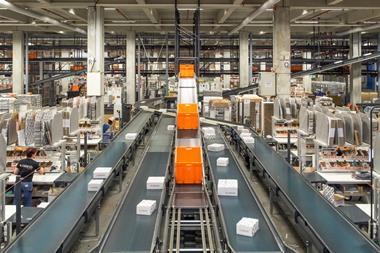BT is today launching the findings of Retailtopia, a year-long investigation into the challenges facing the retail supply chain. I was lucky enough to be involved in a panel discussion to review the findings of the research and two words dominated the event: transformation and urgency. Every single week of the year last year we saw a major high street retailer go out of business. Things need to change – and quick.
The panel included a wide mix of retailers, suppliers and logistics, with two camps emerging: one with a focus on the commercial side of logistics, the other, more customer-facing, concentrating on supply chain agility. What quickly became clear, though, was that these two views need to be reconciled to create a genuine omni-channel supply chain.
Consumers are pushing retailers into omni-channel retailing, whether they like it or not and the Retailtopia vision paper highlights four ‘clear and present threats’:
- The pace of change
- The supremacy of the customer
- The knowledge explosion
- Omni-channel supply chain design
While much of the traditional energy and focus was on fulfilment, getting the goods out is just half the battle for omni-channel retailers. Some sectors can expect as much as 40 per cent of the products sent out to customers to be returned. (In fact, Administrators at a large electrical retailer reportedly discovered more than 6,000 unsorted returned items going back years on pallets at a Warehouse!) And as retailers become more omni-channel, the problem of returns becomes more acute.
There and back again
Returns are an opportunity, not a problem. But getting to that stage, involves:
- Elevating the supply chain
The supply chain needs to be the same level as traditional topics discussed around a boardroom table, such as purchasing. - Getting an omni-channel process for stock from store
With people buying online and returning goods to random locations, retailers need a tactical approach to get the returned goods back into the system – but it is, by its nature, almost unplannable. - Mapping profitability of returns
Targets need to be set for buyers and merchandisers based on returns/margin, so the right measures are in place throughout the entire supply chain journey.
To achieve all this, retailers need systems and processes in place that enable them to use the stock that comes into the store in the most profitable way possible, whether it comes in through a planned delivery or is brought in by a customer. But this demands commitment and leadership, right from the top. Effective supply chain management will increasingly become a differentiator for retailers as it becomes a vital part of the customer experience. Those who ignore it will find themselves on a road to nowhere.
Video:Retailtopia: Josh Pert - BT Expedite & Fresca
To read more about the panel’s recommendations and to see video interviews with panel members, visit www.bt.com/retailtopia


























No comments yet